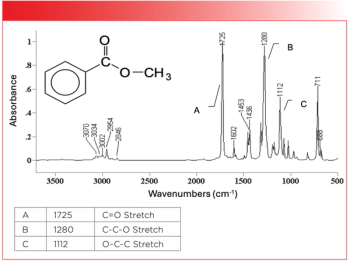
Modeling the Structure, Vibrational, and UV-vis Absorbance Spectra of the Rubrofusarin Molecule
Scientists have conducted a theoretical study on the rubrofusarin molecule, analyzing its structure, vibrational and UV-vis absorbance spectra, and discussing the impact of solvents on its properties, with implications for understanding the characteristics of Fusarium Head Blight (FHB), a fungal disease that affects cereal crops.
A team of researchers at St. Petersburg State University have modeled the structure, vibrational, and UV–vis absorbance spectra of the rubrofusarin molecule, which can be extracted from Fusarium genus fungi such as F. graminearum and F. culmorum. Rubrofusarin is one of the pigments produced by these fungi, which can indicate the presence of Fusarium Head Blight (FHB) in cereals.
Their work is described in the journal Spectrochimica Acta Part A: Molecular and Biomolecular Spectroscopy (1). They used density functional theory (DFT) to investigate the structure and possible rotational conformers and tautomer of the rubrofusarin molecule. They found that the group symmetry of stable molecules was close to Cs and that the smallest potential barrier for rotational conformers was associated with the methoxy group rotation. However, the rotation of hydroxyl groups led to stable states that were substantially higher in energy than the ground state.
The researchers found that the group symmetry (or symmetry of the molecule) was similar to the symmetry of the Cs point group. The Cs point group is a type of molecular symmetry that has a mirror plane and a center of symmetry, and it is one of the common point groups used in chemistry to describe the symmetry of molecules.
The researchers also modeled and interpreted the vibrational spectra of the ground state molecule in the gas phase and methanol solution, and discussed the influence of the solvent. They then modeled the electronic singlet transition within the time-dependent density functional theory (TD-DFT) approach and interpreted the obtained UV–vis absorbance spectra. They found that a relatively small shift in the two most active absorption bands wavelength took place for the methoxy group rotation conformer. However, a redshift of the HOMO-LUMO transition occurred for this conformer. The tautomer showed a much larger long wavelength shift of the absorption bands.
TD-DFT is a theoretical method used to model electronic excitations and optical properties of molecules and solids. It is an extension of DFT, which describes the electronic structure and properties of ground state systems. TD-DFT calculates the excited states and their associated transition energies, which can be used to simulate UV-vis spectroscopy, fluorescence, and other optical phenomena.
In quantum mechanics, highest occupied molecular orbital (HOMO) and lowest unoccupied molecular orbital (LUMO) are terms used to describe the energy levels of electrons in a molecule. The HOMO is the highest energy level that is filled with electrons, whereas the LUMO is the lowest energy level that is empty. A HOMO-LUMO transition refers to the promotion of an electron from the HOMO to the LUMO because of the absorption of a photon, which results in the molecule undergoing an electronic excitation. This process is important in the study of molecular electronic properties, such as UV-vis spectroscopy, and can provide information on the electronic structure of the molecule.
Rubrofusarin and its derivatives have a high pharmacological significance, with previous research showing they have antioxidant, antidepressant, anticancer, antibacterial properties, and the ability to improve the course of Alzheimer-like dementia.
The study contributes to the understanding of rubrofusarin and its properties, which could lead to further developments in its pharmacological applications, as well as the diagnosis and treatment of Fusarium Head Blight in cereals.
Reference
(1) Pankin, D.; Povolotckaia, A.; Borisov, E.; Belyakov, M.; Borzenko, S.; Gulyaev, A.; Moskovskiy, M. Theoretical modelling of structure, vibrational and UV–vis absorbance spectra of rubrofusarin molecule. Spectrochim. Acta A Mol. Biomol. Spectrosc. 2023, 293, 122469. DOI:
Newsletter
Get essential updates on the latest spectroscopy technologies, regulatory standards, and best practices—subscribe today to Spectroscopy.





